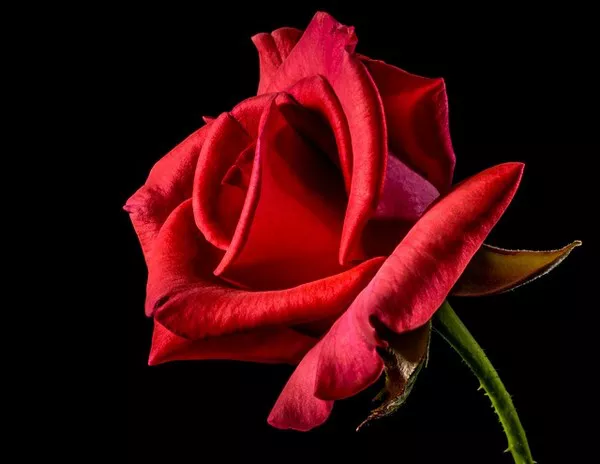Birthdays hold a special significance in our lives, not only marking the passage of time but also serving as a celebration of our existence. Alongside the customary birthday cake and well-wishes, birth flowers have emerged as an intriguing way to personalize these celebrations. Just as birthstones are associated with each month, birth flowers offer a unique connection to nature, history, and symbolism. In this article, we delve into the captivating world of birth flowers, focusing on the symbolism and significance of these botanical companions.
Historical Roots and Symbolism
The tradition of assigning flowers to birth months dates back to the Victorian era, a time when symbolism and sentimentality were paramount in daily life. Inspired by the language of flowers, known as floriography, the Victorians imbued specific meanings to various blooms, allowing people to communicate their feelings and emotions through these living symbols. Birth flowers were a natural extension of this concept, linking each month with a flower that resonated with the qualities associated with that time of year.
Exploring Birth Flowers
As we journey through the months, the diversity and beauty of birth flowers become apparent. Let’s explore a selection of these floral emblems and their meanings:
January: Carnation
Welcoming the year, January is represented by the carnation. With its delicate petals and rich fragrance, the carnation is often associated with love, fascination, and distinction. Different colors of carnations convey nuanced emotions; for example, red symbolizes deep love, while pink represents a mother’s undying love.
March: Daffodil
March brings the daffodil, a sunny blossom that embodies renewal and vitality. With its vibrant yellow petals, the daffodil signifies new beginnings and the arrival of spring. It’s a reminder of the potential for growth and the beauty that emerges after the cold winter months.
June: Rose
The queen of flowers, the rose, takes center stage in June. With a myriad of colors, each variation of the rose carries a distinct message. Red roses symbolize passion, while yellow roses represent friendship and joy. The rose’s timeless beauty mirrors the diverse range of human emotions and connections.
August: Gladiolus
Representing August, the gladiolus stands tall and elegant. Its name is derived from the Latin word for sword, “gladius,” symbolizing strength, integrity, and moral character. With its towering spikes of blossoms, the gladiolus conveys a message of inner strength and sincerity.
October: Marigold
As autumn leaves fall, marigolds bloom in October. Symbolizing passion and creativity, marigolds also carry themes of protection and comfort. In many cultures, these vibrant flowers are used in festivals and rituals, infusing life into traditions that span generations.
Unearthing Personal Connection
While the historical symbolism is intriguing, birth flowers can hold deeply personal meanings. They can reflect an individual’s personality, experiences, and aspirations. For instance, someone born in October might resonate with the marigold’s themes of passion and protection, finding parallels with their own journey and desires. The connection between birth flowers and personal identity adds a layer of depth to the tradition, making it a source of contemplation and self-discovery.
Celebrating with Birth Flowers
Incorporating birth flowers into birthday celebrations can be a meaningful and thoughtful gesture. Just as each flower carries its own significance, the act of gifting someone their birth flower demonstrates an understanding of their unique qualities and a desire to celebrate their essence. Whether presented as a bouquet or creatively integrated into decorations, birth flowers add a touch of personalized charm to the occasion.
Beyond Birthdays: Everyday Symbolism
Birth flowers need not be limited to birthdays alone. Their symbolism can be cherished and applied throughout the year. A bouquet of daffodils can uplift spirits during challenging times, serving as a reminder that renewal follows difficulty. A rose on Valentine’s Day can convey heartfelt emotions, while a gladiolus can stand as a token of support during times of change. Embracing birth flowers in daily life connects us to the natural world and its ever-changing cycles, fostering a sense of unity and harmony.
Cultivating Awareness and Appreciation
In a fast-paced world, the tradition of birth flowers encourages us to pause, reflect, and connect with the beauty and significance of nature. By learning about the birth flower associated with each month, we engage with history, culture, and symbolism. This engagement fosters a deeper appreciation for the natural world and its profound impact on our lives.
Conclusion
Birth flowers are more than just botanical symbols; they are gateways to a world of emotions, history, and personal connection. In celebrating these flowers, we celebrate life itself—its complexities, joys, and challenges. Whether gifted to another or embraced for ourselves, birth flowers remind us of the intricate tapestry of existence and the beauty that can be found in every petal and leaf. So, as your next birthday approaches, take a moment to uncover the story behind your birth flower and let its unique symbolism enhance your celebration.


